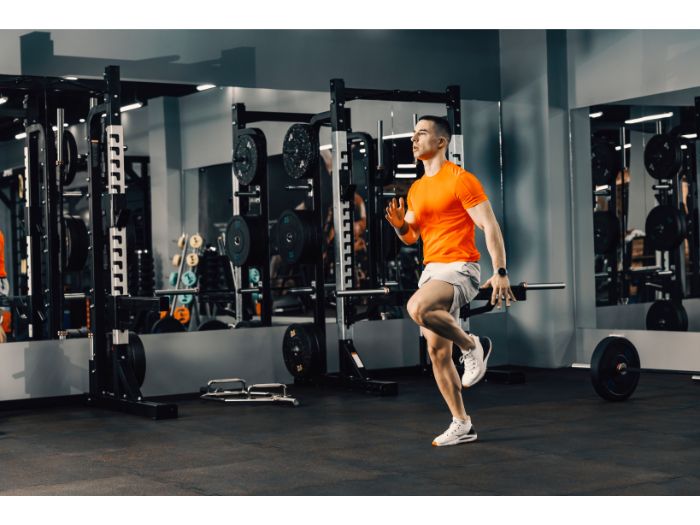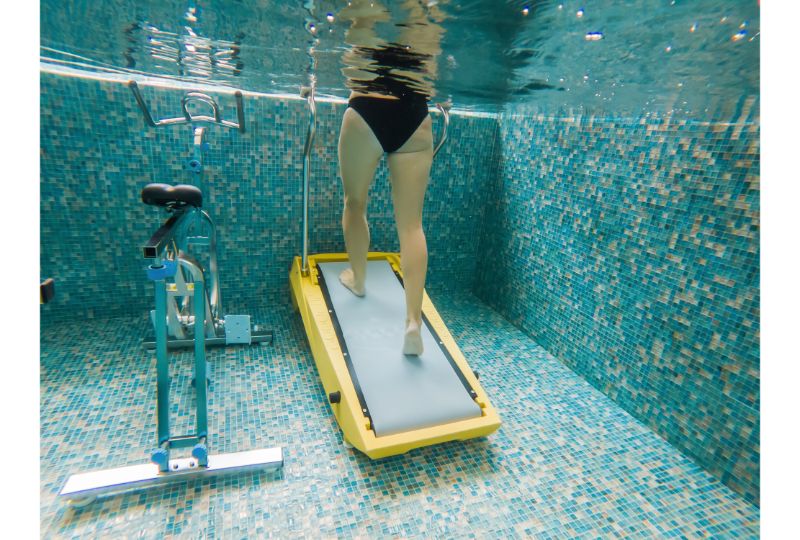Is Jogging in Place Effective
This page contains affiliate links. As an Amazon Associate I earn from qualifying purchases.
Do you live in a place where going for a scenic jog around your neighborhood just isn’t in the cards? Or maybe you can’t get to the gym as often as you would like in order to use the treadmill? Using jogging in place as a replacement for distance jogging might not be such a bad idea.
We are going to explain the benefits of jogging in place, as well as some of the things that you want to be cautious about while attempting this particular exercise.
Quick Navigation
The Difference Between Regular Jogging and Jogging in Place
Jogging in place and jogging may seem like virtually the same exercise, but you’d be surprised to find that there are actually more differences than just the obvious one – making distance.
When you jog in place, you’re actually utilizing different muscle groups and movements than if you were to do just regular jogging. You’re not using the same mechanics, so your muscles will be working in a variety of different ways.
For example, when you jog in place, your muscles aren’t engaged to cause forward movement. As well, when you jog in place you’re going to be landing on your toes and the balls of your feet much more often, rather than landing on the flat of your foot. This will build up lower leg and ankle strength in a way that regular jogging might not do.
As well, your glutes aren’t as engaged, since you’re lifting your knees higher to jog in place. Using the balls of your feet might also put more pressure on your knees and hips if you do it for too long.
4 Benefits of Jogging in Place
Jogging and jogging in place both have their benefits. Let’s take a look at some of the ways jogging in place can benefit your body in the long run.
Improved muscle strength
When you jog in place, you’re engaging a bunch of different muscles that you might not otherwise when jogging. The constant movement requires you to use your muscles, which can benefit your muscle strength, flexibility, and even stability.
Improved knee strength
Jogging in place requires you to put a lot of pressure on your knees since you’re lifting them higher than you would while jogging regularly. As well, when you land on the balls of your feet, you’re putting more pressure on your knees. This can help build up the strength and health of your knees in the long run.
Weight loss
Jogging in place has been proven to help with weight loss. When you jog in place, your heart rate elevates, which causes you to burn more fat and calories. When you’re burning more calories than you’re eating in a day, it helps you lose weight.
Heart health
Jogging in place is also a cardiovascular exercise. When you jog in place, your heart rate elevates, which helps improve your cardiovascular function. It can also improve your circulation and improve your lung capacity.

What to Watch Out For
While jogging in place can be beneficial to your health, much like other exercises, you want to keep an eye out for issues when it comes to how well your body can handle this particular exercise.
Pressure on knees and hips
Even though landing on the balls of your feet and lifting your knees up high can benefit your knee strength, you also want to watch out for all that excess pressure. If you jog in place for too long or have bad form, you might find that your knees and hips can suffer from it.
Muscle fatigue
The repetitive movements of jogging in place have a lot of health benefits for your body, but if you’re not careful you might find yourself experiencing muscle fatigue. After a bout of jogging in place, you may find that your muscles are sore and uncomfortable.
Correct form
Because of the way jogging in place works, you may find it harder to maintain the correct form while making these repetitive movements over and over again. If you’re not careful, incorrect jogging form can cause muscle aches and back pain.
When to Use Jogging in Place
Jogging in place has a lot of health benefits for your heart, lungs, muscles, and overall health. However, jogging in place does leave out some vital muscle groups that can be worked through regular jogging.
When you jog around the block or on a treadmill, you activate your glutes and hamstrings without putting as much stress on your knees, ankles, and hips. Jogging will provide the same cardiovascular benefits while taking some of the stress off your hips and knees.
However, jogging in place is ideal for 10-minute intervals or less, spaced out throughout the day. If you have very limited space or can’t go jogging, then jogging in place is a perfectly fine replacement. You just want to make sure you keep an eye out for any muscle fatigue or pain, and try not to do it for longer than 10 minutes at a time.
Final Thoughts: Is Jogging in Place Effective?
Short answer: yes! Jogging in place has a whole host of benefits that we’ve laid out for you above. While there are still some risks involved, you’re going to find these risks with pretty much any high-energy exercise, even regular jogging.
However, in the long run, jogging in place is great for people who have both limited time and space. You’re going to engage different muscles than regular jogging that you might not otherwise get a chance to engage during your exercise routines.
Regular jogging might be better if you want to have a longer workout, if you’re looking to engage your glutes and hamstrings, or if you feel like you can’t put a lot of pressure on your knees and hips.
Jogging in place has a lot of cardiovascular benefits as well. If jogging in place sounds right for you, then find your favorite spot and take a jog— right where you are!



